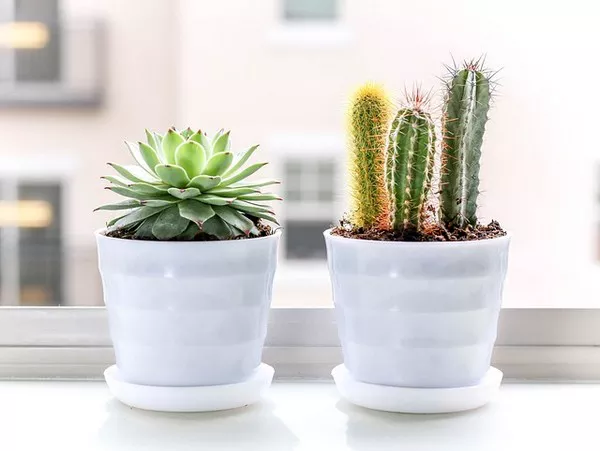Cacti, with their unique and often otherworldly appearance, have long captured the imagination of nature enthusiasts and botanists alike. These resilient plants, native to arid regions around the world, have adapted to survive in harsh conditions, showcasing an array of remarkable features. Among these features are the stunning flowers that adorn many cactus species, adding a burst of color to their rugged surroundings. In this article, we delve into the captivating realm of cactus flowers, exploring their diversity, characteristics, and the fascinating plants that produce them.
Understanding Cactus Flowers: A Kaleidoscope of Colors and Forms
Cactus flowers are renowned for their striking beauty and diverse array of colors, shapes, and sizes. Contrary to popular belief, not all cacti produce flowers, but those that do often produce blooms that are nothing short of spectacular. These flowers have evolved to attract pollinators in their harsh desert habitats, often exhibiting adaptations such as bright colors, enticing fragrances, and intricate petal arrangements.
One of the most iconic cactus flowers is the blossoms of the Saguaro cactus (Carnegiea gigantea), which are large, white, and emit a sweet fragrance to attract nocturnal pollinators like bats and moths. Similarly, the Barrel cactus (Ferocactus spp.) produces vibrant red or yellow flowers that contrast starkly against its spiny green body, attracting pollinators such as bees and birds.
Cactus flowers come in a wide range of colors, including shades of pink, purple, red, yellow, and white. Some species produce flowers with multiple hues, creating stunning patterns and gradients that add to their allure. The delicate beauty of these blooms serves as a testament to the resilience and adaptability of cacti in their harsh environments.
The Diversity of Cactus Flowers: From Miniature Marvels to Giant Blooms
Cactus flowers exhibit remarkable diversity not only in color but also in size and shape. Some species produce tiny, delicate blooms that are no larger than a few centimeters in diameter, while others boast massive flowers that can span several inches across.
For example, the Parodia leninghausii, also known as the Lemon Ball cactus, produces small, bright yellow flowers that measure only about an inch in diameter. These petite blooms contrast with the spiky, spherical body of the cactus, creating a charming display.
In contrast, the Queen of the Night (Selenicereus grandiflorus) produces enormous white flowers that bloom only at night, emitting a sweet fragrance to attract nocturnal pollinators. These stunning flowers can measure up to a foot in diameter and are renowned for their ephemeral beauty.
The Ecology of Cactus Flowers: Adaptations for Survival and Reproduction
Cactus flowers have evolved a variety of adaptations to thrive in their arid habitats and ensure successful reproduction. One such adaptation is the timing of flowering, with many cactus species producing blooms during the cooler months or at night to avoid the intense heat of the day.
Additionally, cactus flowers often exhibit adaptations to attract specific pollinators, ranging from bees and butterflies to bats and birds. These adaptations may include brightly colored petals, sweet fragrances, and nectar-rich rewards for pollinators.
Furthermore, cactus flowers have developed mechanisms to conserve water and energy during the flowering process. Many species produce succulent stems and leaves that store water, allowing the plant to survive extended periods of drought while still producing blooms. Additionally, some cacti have evolved to shed their flowers after pollination to conserve resources for seed production, ensuring the survival of future generations.
Notable Cactus Species and Their Spectacular Flowers
Numerous cactus species are renowned for their spectacular flowers, each with its unique characteristics and adaptations. Some of the most notable cactus species and their flowers include:
Opuntia spp. (Prickly Pear cactus): This genus comprises a diverse group of cacti known for their flattened, paddle-shaped stems and vibrant flowers. Opuntia species produce blooms in shades of yellow, orange, pink, and red, attracting a variety of pollinators.
Echinopsis spp. (Easter Lily cactus): These cacti, native to South America, are characterized by their cylindrical stems and large, showy flowers. Echinopsis species produce blooms in an array of colors, including white, pink, red, and purple, often with contrasting throat markings.
Epiphyllum spp. (Orchid Cactus): Unlike most cacti, which grow in arid environments, Epiphyllum species are epiphytic and grow in trees or on rocks in tropical forests. These cacti produce large, fragrant flowers in shades of white, pink, orange, and red, often with intricate petal arrangements.
Gymnocalycium spp. (Chin Cactus): This genus of cacti is known for its small, globular stems and colorful flowers. Gymnocalycium species produce blooms in shades of pink, purple, red, and white, often with contrasting stripes or markings.
Mammillaria spp. (Pincushion cactus): These cacti are named for their cylindrical or spherical stems covered in dense clusters of spines. Mammillaria species produce small, colorful flowers in shades of pink, red, yellow, and white, often with intricate petal arrangements.
Conclusion
Cactus flowers are a testament to the remarkable adaptability and resilience of these iconic plants. From the towering Saguaro cactus to the diminutive Lemon Ball cactus, each species boasts its unique array of flowers, showcasing a kaleidoscope of colors, shapes, and sizes.
These stunning blooms play a vital role in the ecology of arid environments, attracting pollinators and ensuring the survival of cactus species. As we continue to explore and appreciate the beauty of cactus flowers, we gain a deeper understanding of the intricate relationship between plants and their environments, highlighting the importance of conservation efforts to protect these remarkable species for generations to come.


